We’ve all been there. You notice a missing shingle or a cracked tile on your roof, but you ignore it. After all, it’s just one shingle or tile, right? Wrong! Putting off roof repairs can cost you more in the long run. From increased energy bills to needing more extensive (and costly) repairs later on down the line, it pays to take care of your roof rather than wait until it’s too late. In this article, we’ll look at why putting off roof repairs can cost you more in the future and what you can do to avoid it.
Have you noticed any signs of wear and tear on your roof lately? If so, don’t procrastinate and wait for things to get worse. Roofs are not something that should be put off – they need regular maintenance to ensure they remain in top condition and don’t require expensive repairs down the road. Even minor issues, such as loose shingles or cracked tiles, can lead to more severe damage if left unattended, so it’s important to fix them as soon as possible.
Make sure you understand how much damage can be caused by neglecting your roof repairs before it’s too late. Read on to find out why putting off roof repairs can cost you more money in the long run and what steps you can take to prevent this from happening!
Contents
- 1 1. What Is Roof Repair?
- 2 2. Benefits Of Regular Roof Maintenance
- 3 3. Common Roof Problems
- 4 4. Cost-Effectiveness Of Repairs Vs. Replacement
- 5 5. Potential Damage From Neglecting Repairs
- 6 6. How To Identify Signs Of Roof Damage
- 7 7. Risk Factors For Roof Deterioration
- 8 8. Available Repair Solutions
- 9 9. Factors Affecting The Cost Of Roof Repairs
- 10 What To Do If You Need Your Roof Repaired
In this article:
- What is Roof Repair?
- Benefits of Regular Roof Maintenance
- Common Roof Problems
- Cost Effectiveness of Repairs vs Replacement
- Potential Damage of Neglecting Repairs
- How to Identify Signs of Roof Damage
- Risk Factors for Roof Deterioration
- Available Repair Solutions
- Factors Affecting the Cost of Roof Repairs
- What To Do If You Need Your Roof Repaired
1. What Is Roof Repair?
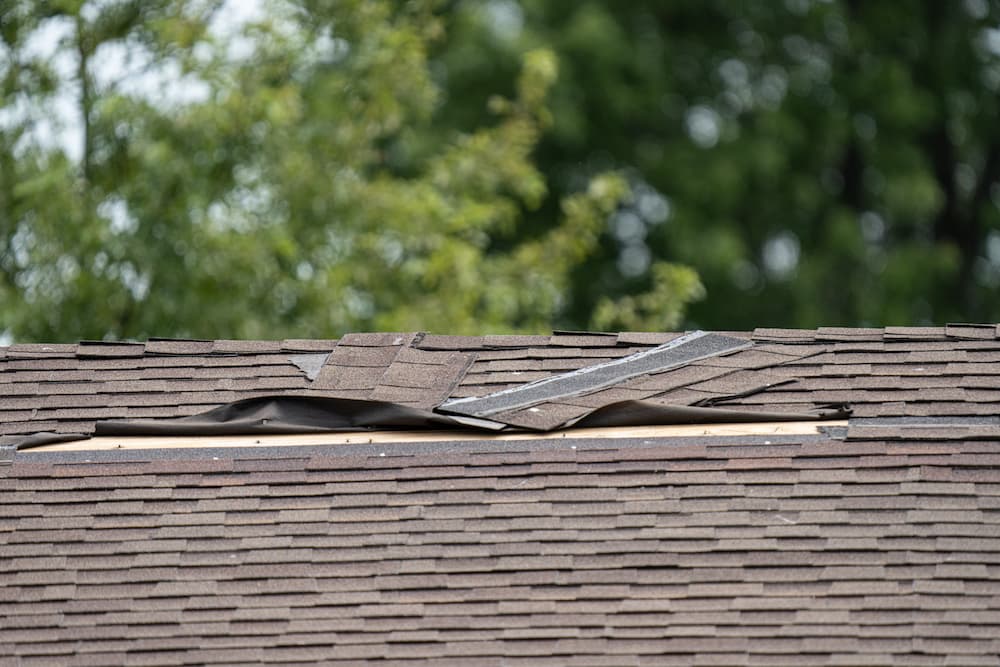
Roof repair is a term used to describe the process of repairing and maintaining residential and commercial roofs. This can include anything from replacing missing tiles to inspecting for damage from storms or other adverse weather conditions. Roof repair is an essential task for ensuring the safety of your home or business premises and protecting your property’s value. Getting any necessary repairs completed shortly after noticing them is essential, as putting them off for too long can lead to further damage that may be more costly in the long run.
The first step in roof repair is to identify any existing damage on the roof and assess its severity. This usually involves inspecting the area from ground level and taking photos if needed. If there’s a visual indication that something needs attention, such as missing tiles or cracks in the mortar, then it’s important to check it out further with a professional roofer. They will be able to determine precisely what needs doing and provide you with an estimation of cost based on their findings.
Once you have received a quote for the work that needs doing, you should consider whether now is the right time to go ahead with repairs or if they can wait until later on down the line. It’s not always easy to decide when enough is enough – but don’t forget that leaving things too late can end up costing more due to additional damages caused by neglecting small problems initially. To ensure the longevity of your roof and avoid unnecessary expenses in the future, it’s best practice to address minor issues sooner rather than later.
It pays off in the end if you take roof repair seriously; not only do you save yourself money, but also keep your home safe from potential hazards caused by inadequate maintenance over time. So don’t delay – take action today!
2. Benefits Of Regular Roof Maintenance
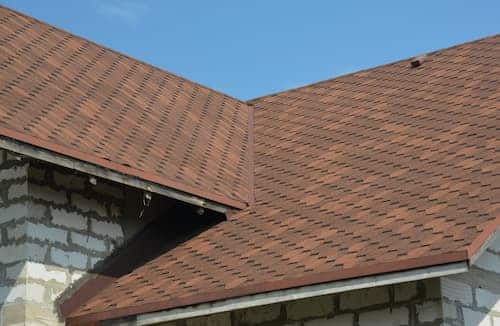
Regular roof maintenance is an important part of preserving the integrity of your home. Keeping up with repairs and preventative care can save you money in the long run by avoiding costly damage from issues that could have been prevented. There are several key benefits to staying on top of roof maintenance.
One benefit is that regular inspections can identify minor problems before they become more serious and expensive to repair. A qualified technician can spot signs of wear and tear, as well as potential damage from weather or pests that might require attention. Catching these issues early on can help you avoid more costly repairs down the road.
Another advantage is that regular maintenance extends the life of your roof. By taking care of small issues when they arise, you can ensure your roof lasts for its full lifespan without a need for premature replacement due to neglect. Additionally, regular maintenance helps protect against leakage and water damage, which can be expensive to repair if not caught in time.
Maintaining your roof also protects the rest of your home from potential harm caused by inadequate protection against extreme weather conditions or pests. Without proper coverage, you may end up dealing with structural damage or mold growth in other areas of your house as a result of neglected roofing needs. Investing in regular roof maintenance will help keep these issues at bay and safeguard both the inside and outside of your home from unnecessary destruction or deterioration over time.
3. Common Roof Problems
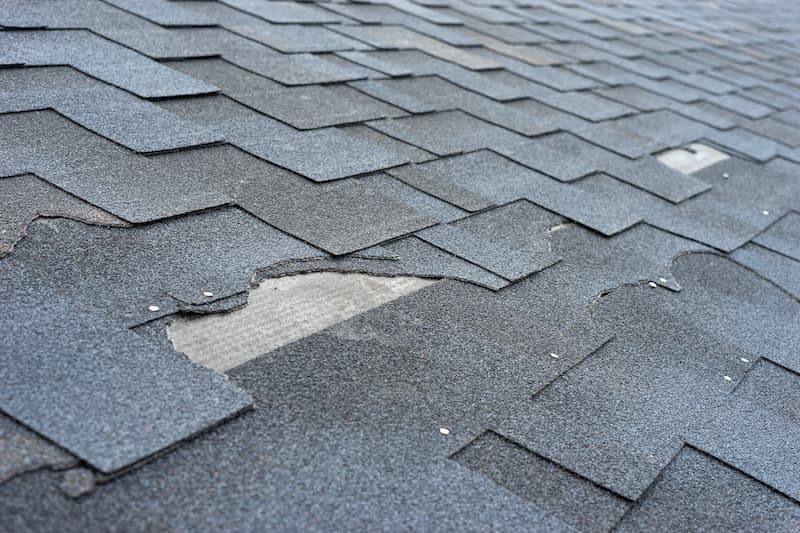
When it comes to roof maintenance, it’s important to identify and address any issues as soon as possible. Common roof problems can start off small, but if left unchecked, they can quickly become bigger issues that can cost more in the long run. In this article, we’ll examine some of the most common roof problems and their potential costs.
The most common roof problem is cracked or missing shingles. Shingles protect the rest of your roof from damage due to exposure to wind, rain, snow and hail. If your shingles are cracked or missing, you need to replace them right away, or else water will be able to get into your home and cause further damage. Other common problems include damaged flashing around vents and chimneys, worn rubber seals around skylights, broken gutters, and clogged downspouts. All of these require immediate attention if you want to avoid costly repairs down the line.
Finally, it’s also important to keep an eye out for signs of structural damage such as sagging rafters or trusses and rotting wood underneath the shingles. These can be caused by moisture from a leaky roof or other issue and have serious consequences if left unaddressed. It’s recommended that you inspect your roof at least twice a year for signs of damage so you can take action before things get worse.
Regular maintenance is key when it comes to keeping your roof in good condition and avoiding expensive repairs over time. Taking care of minor issues right away will save money in the long run and help ensure that your home is safe from further damage due to neglect.
4. Cost-Effectiveness Of Repairs Vs. Replacement
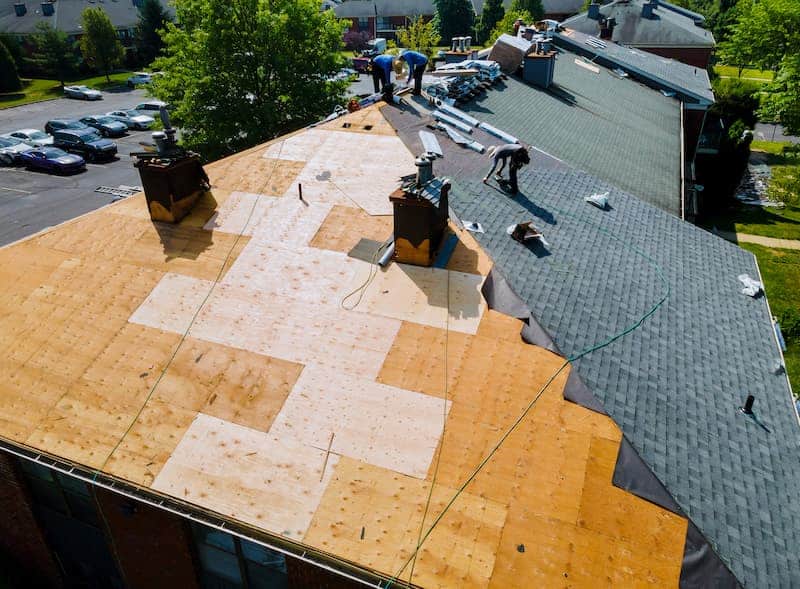
Repairing a roof can be a costly endeavor, but it is often more cost-effective than replacing it. While the initial costs of repairing a roof may seem high, they are usually much lower in the long run compared to the expense of replacing an entire roof.
In many cases, minor repairs can take care of small problems before they become costly issues. For example, if there is a small leak or some missing shingles on the roof, these can generally be fixed with only a few dollars spent on materials and labor. On the other hand, leaving these repairs unaddressed could lead to structural damage that would require expensive replacement work.
It’s also important to remember that timely repairs don’t just save money – they also extend the life span of your roof. A well-maintained roof can last up to two decades with regular maintenance and repairs, whereas one that isn’t properly taken care of will need to be replaced far sooner. This makes it essential for homeowners to stay on top of any small issues so that their roofs stay in good shape for many years to come.
Put simply, investing in timely repairs now is much more cost-effective than waiting until larger problems arise and having to replace the entire roof later down the line. Homeowners should keep this in mind when assessing their roofs for potential repair needs; taking swift action now can save them thousands of dollars in the future!
5. Potential Damage From Neglecting Repairs
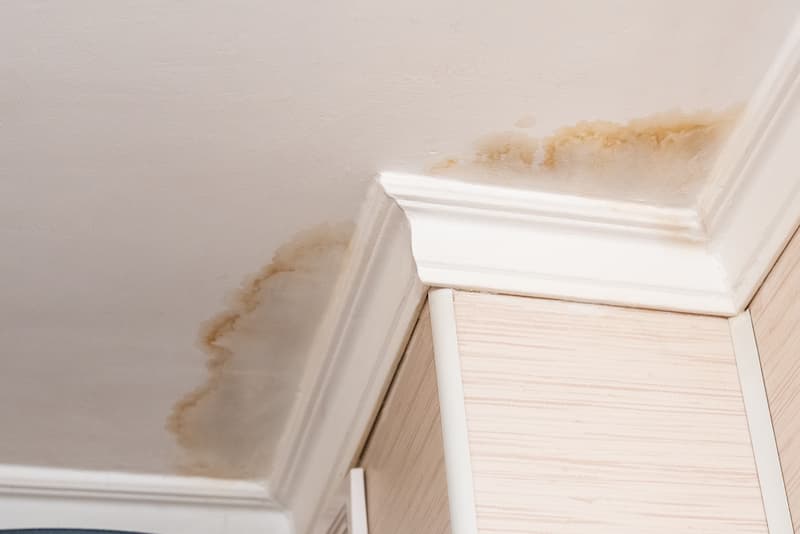
When it comes to roof repairs, delaying them can be costly in the long run. Neglecting these repairs can lead to potential damage that may be more expensive to fix than if the initial repairs had been completed when they were first needed.
In some cases, the cost of replacing a roof is much less than the cost of repairing it multiple times over a period of several years. This is especially true if you fail to take care of minor issues before they become major problems. For example, small leaks that go unfixed can turn into large water damage if left unchecked. In addition, shingles and other roof components that are not properly maintained can deteriorate more quickly and require more frequent replacements, which can add up over time.
Proactively addressing roof repairs as soon as they are needed is one of the best ways to save money in the long run. If any damage or wear and tear is noticed, it’s important to contact a professional for an inspection and maintenance as soon as possible. This will help ensure that any necessary repairs are taken care of before further damage has a chance to occur, saving you time and money in the future.
So don’t wait – taking action now can help prevent costly problems down the line!
6. How To Identify Signs Of Roof Damage
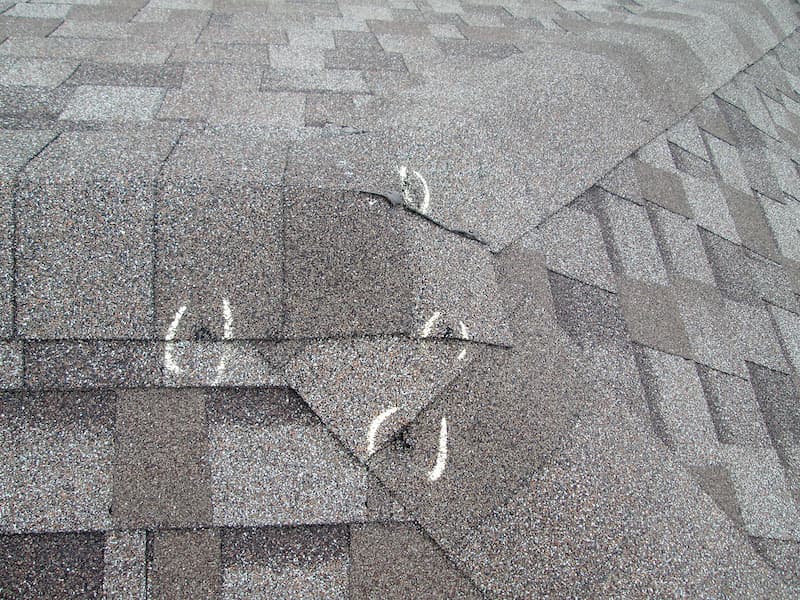
Identifying signs of roof damage early is key to avoiding additional costs for repairs down the line. Look for missing or broken shingles, as well as any damp spots or streaks on the interior of your home. If you can access your attic space, check for water stains that may indicate a leak from above. Also, look for buckling or warping in the roof decking. These are all signs that it’s time to contact a professional roofer and get an inspection done.
If you’re still unsure about whether there might be damage, go outside and take a look at your roof from ground level. If it looks uneven or the shingles are discolored when compared with other parts of the roof, then something is likely wrong. It’s also important to check around chimneys, vents, and skylights, since these areas are more vulnerable to water damage than other parts of the roof.
In some cases, you may also be able to hear telltale signs of damage such as dripping water or squeaking wood planks inside your attic space. The earlier you catch potential issues like these, the easier and less costly they will be to repair. Taking action now can help save you money in the long run and protect your home from further damage due to neglected repairs.
7. Risk Factors For Roof Deterioration
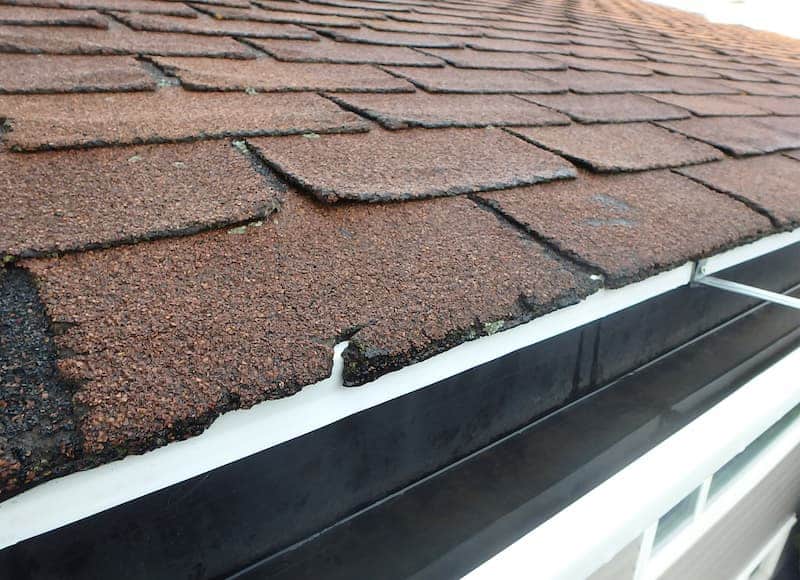
When it comes to roof repair, the risk factors for deterioration can’t be ignored. The first factor is weather and climate. Areas with extreme temperatures, high winds, or even frequent hail storms can cause considerable damage to a roof’s shingles and can lead to more frequent repairs.
Another risk factor is age. Older roofs are more prone to wear and tear due to exposure over time, and if not maintained properly this can lead to costly repairs down the line. Improper installation or inadequate ventilation can also contribute to roof deterioration, leading to water leaks inside the home or other structural damage.
It’s important for homeowners to keep an eye on their roofs and stay on top of regular inspections and maintenance. By doing so, they’re less likely to face costly repairs in the future due to undetected signs of damage that could have been prevented. Taking care of your roof isn’t just about preventing future problems, it’s also about protecting your home – and that’s worth taking seriously no matter what.
8. Available Repair Solutions

When it comes to roof repairs, it’s important to act quickly. Putting them off can cost you more in the long run. So, if you’re facing roof deterioration, what repair solutions are available?
There are a few options for repairing a damaged roof. If the damage is minor and localized, repairs may be possible without replacing the entire roof. This could involve patching holes or replacing certain components of the roof structure. On the other hand, if the damage is more extensive or widespread, you may have to replace your entire roof.
Before deciding which course of action to take, you should consult with an experienced professional who specializes in roofs and can assess your particular situation. They’ll be able to provide you with advice on how best to proceed and explain the pros and cons of both repair and replacement options. In many cases, they’ll also be able to provide an estimate of how much either option will cost.
No matter which route you go down – repair or replacement – having your damaged roof fixed sooner rather than later can help avoid further problems down the line. Taking the time now to address any issues can save time and money in the long run by ensuring that your home is secure from potential water damage or other costly repairs caused by a neglected or badly-maintained roof system.
9. Factors Affecting The Cost Of Roof Repairs
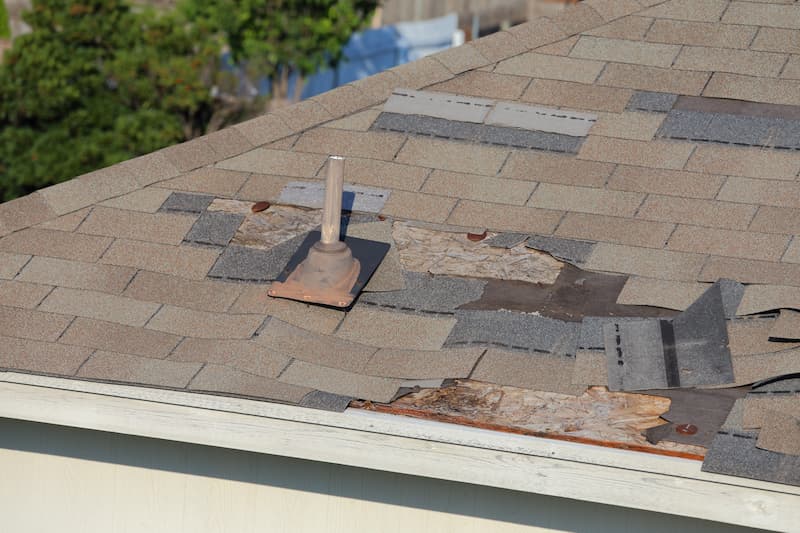
When it comes to roof repairs, the cost is determined by a few factors. These include the type of roof material being used, the extent of the damage, and the complexity of the repair job. It’s important to consider these factors when determining how much repairs will cost in the long run, especially since putting off repairs can cause further damage and increase overall costs.
The type of material used for your roof is one factor that affects repair costs. Asphalt shingles are relatively inexpensive but may need frequent repairs due to their susceptibility to weather conditions. On the other hand, metal roofs are more expensive but have a longer lifespan and require fewer maintenance needs. Knowing what type of material you have on your roof will help you determine an accurate estimate for your repair job.
Another factor that affects repair costs is the extent of the damage. If there’s just a small area that needs fixing, then it won’t be as costly as if there were multiple areas that needed attention or if severe structural damage had occurred. It’s essential to inspect your roof regularly so that any potential issues can be addressed quickly before they become bigger problems down the line.
In addition to these two factors, complexity plays an important role in determining repair costs too. If there’s a complex design or intricate details on your roof, then specialized materials and additional labor may be required due to their difficulty level; this could drive up prices significantly compared to simpler designs or structures. Taking all these things into account will help you get a better idea of how much repairs may cost in total so you’re not surprised by unexpected expenses later on.
What To Do If You Need Your Roof Repaired
It’s important to be aware of the potential for roof damage and the importance of regular inspections. Putting off repairs can cost you more in the long run, as the longer you wait, the worse the damage can become. That’s why it’s important to know what warranties and preventative measures are available for your roof.
DIY solutions might be a good option if you have minor damages that don’t require a professional contractor, but any major repairs should only be handled by qualified professionals. Knowing the average lifespan of your roof will also help you decide when it’s time to plan for a replacement.
Regular maintenance is key to keeping your roof in tip-top shape and preventing more costly repairs down the road. Don’t put off getting your roof checked out – it could save you time and money in the long run! Contact us today to schedule a free estimate, or call (234) 281-1754
